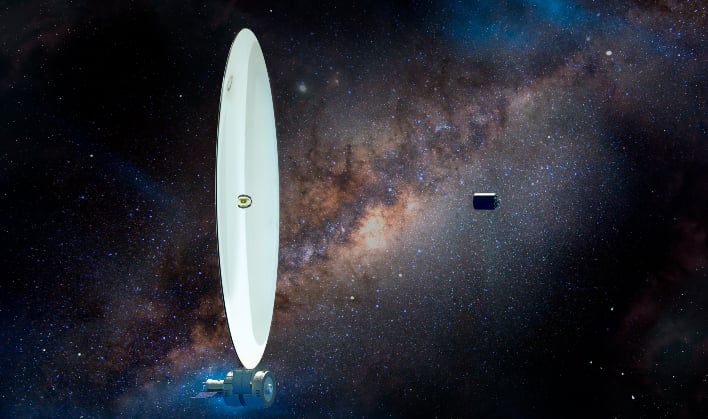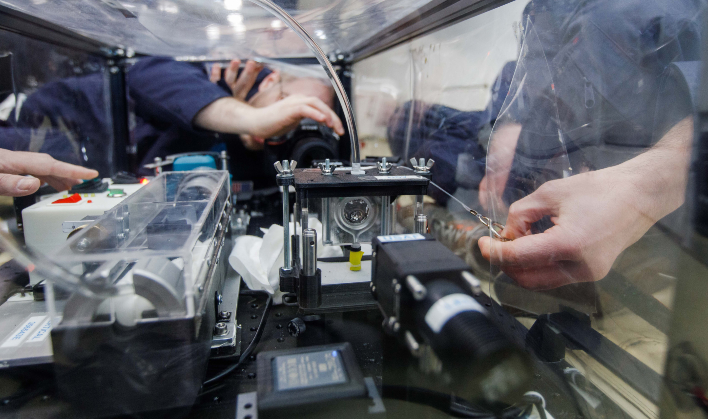ISS Astronauts Are Building An Enormous Telescope In Space Using Liquid Lenses

As the world patiently awaits the James Webb Space Telescope (JWST) to cool down enough to become fully operational and begin taking more detailed images of distant objects than ever before, NASA is not content with merely settling for what JWST will be able to provide. It wants to build bigger and better space telescopes in the future, and is looking to a potential novel idea that includes using liquids.
One idea that has been floated around the space agency, is using liquids to build a telescope in space. All liquids have what is called surface tension. This is what allows some insects to glide across water without becoming submerged, as well as what gives droplets of water their shape. If a water droplet is small enough (2 mm or smaller), it can defeat gravity and remain perfectly circular.
"We thought, why not take advantage of the way liquids naturally behave in microgravity and apply it to the construction of large-scale telescopes or space-manufactured optical components that can have all kinds of uses," stated Balaban. He added that in microgravity, liquids can take on forms that can be useful for making lenses and mirrors. Therefore, if these liquid telescopes are created in space, they could be built to be immensely larger than what was previously thought possible.
Incredibly, the researchers were able to create a lens in a janitor's bucket, according to Dr. Valeri Frumkin. "Polymers, which are also used in nail salons to make acrylic nails or in adhesives like superglue, are a natural choice for lens material. The trick is to make sure that the water has the exact same density as the polymer we're injecting so that the forces of buoyancy precisely oppose gravitational forces to simulate the conditions of weightlessness."
The team tested out their theories on two ZeroG parabolic flights this past December. They were able to use 50 opportunities on the flights to achieve 15 to 20 second periods of microgravity, which was long enough for them to form liquid lenses and capture data.

Ax-1 crew member Eytan Stibbe will perform the next experiment aboard the International Space Station, with Ax-1 Commander Michael Lopez-Algeria serving as his backup. This time the experiment will take place entirely in microgravity, and will use UV light or temperature to harden them in-orbit. The lenses that are created in space will then be returned to Earth where researchers will continue exploring the possibilities.
Top Image Credit: NASA

